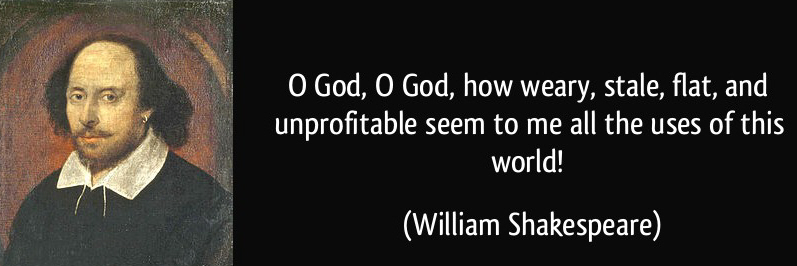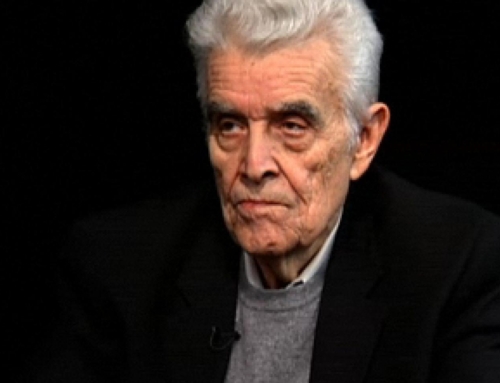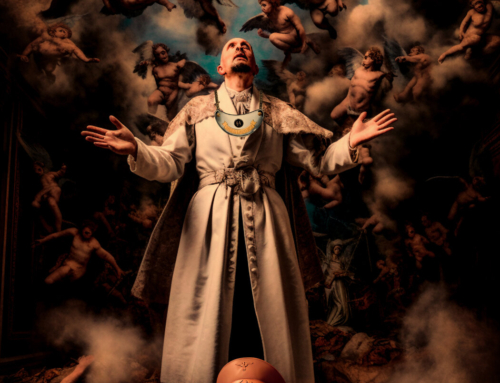 Today is William Shakespeare’s birthday, and it’s getting to be pretty well accepted that the mysterious man of Avon was actually a Catholic. Joseph Pearce’s book, The Quest for Shakespeare is the best of the books exploring the evidence for Shakespeare’s Catholicism.
Today is William Shakespeare’s birthday, and it’s getting to be pretty well accepted that the mysterious man of Avon was actually a Catholic. Joseph Pearce’s book, The Quest for Shakespeare is the best of the books exploring the evidence for Shakespeare’s Catholicism.
It is a web of intriguing evidence from the fact that Shakespeare’s mother came from a famous family of recusant Catholics, his school teachers were Catholics and his father was fined for being a Catholic as was his daughter. Pearce pieces together the rest of the evidence as well in a fascinating study that comes up with the conclusion that if Shakespeare wasn’t a practicing Catholic then, at least his worldview, his values and beliefs were infused with a Catholic vision.
I wrote an article for Pearce’s journal St Austin Review on how Shakespeare’s Catholic vision affected his work and how and why it differs so deeply from the drama produced today for television and the movies. You can read the article here: Shakespeare and the Movies.
The world of Shakespeare/Catholic scholarship is growing, and the plays are being interpreted in the light of Shakespeare’s Catholic faith. The scholarly argument was put forward by the late Peter Milward in (among other books and many articles) The Catholicism of Shakespeare’s Plays The most controversial book is Claire Asquith’s Shadowplay in which she theorizes that all Shakespeare’s plays–written during the police state of the Elizabethan regime–were all coded messages to undermine the tyrant queen and her anti-Catholic forces. Asquith hit upon the idea while watching a play in Soviet Russia. The play in Russia seemed innocent enough, but the audience all knew that the author had woven into the play a politically subversive message through the clever use of symbols, code words, significant characters etc. Asquith leapfrogs from that experience seeing Shakespeare as a similarly subversive character in the midst of a tyrannical police state.
Like all conspiracy theories there is enough evidence to make you believe it is all true, then suddenly a piece of the puzzle doesn’t fit; some common sense steps in and it all seems like an illusion.
However, the details from the plays are intriguing. Joseph Pearce is writing a whole series of new interpretations of the plays which unlock the Catholic meaning. Through Shakespeare’s Eyes starts out with Hamlet, King Lear and Merchant of Venice.
In As You Like It the refugees live in exile in the Forest of Arden. The Forest of Arden was a real place in England–not only a secure hiding place where a network of recusant families lived, but also the home of Shakespeare’s mother’s family. Do the exiles living in the forest represent the Catholic recusant families hiding from the Queen’s soldiers? Those who are seeing a Catholic code cheer enthusiastically. The ones who see an innocent coincidence say Shakespeare was referring to the wooded region in Belgium/France, the Ardenne.
The Catholic details I like best are from Hamlet. Hamlet and Horatio are students at the Protestant town of Wittenburg–where Luther began the Protestant revolution. The Danish kingdom is Protestant, and like the Tudor regime, there are tales of usurpation, murder, incest, adultery, madness and Machiavellian schemings. What does Shakespeare think of this Protestant regime? “There is something rotten in the state of Denmark.” Hamlet’s Protestantism brings about his relativism, (“there is no good nor bad, but thinking makes it so.”) his indecision, his doubt and fear. He is alone without moorings and drifting in a moral wasteland.
Does Claudius represent the corrupt Tudor dynasty–founded on murder and usurpation–for which Henry VII was blamed? Are the mysterious characters Rosencrantz and Guildenstern secret Catholic signs? Rosencrantz means ‘rose garland’ and was an ordinary devotional term for ‘rosary’. Guildenstern means ‘golden stone’ and ‘Golden Stone’ was one of the medieval names for Our Lady. Rosencrantz and Guildenstern are fellow students at Wittenburg, and when they go to the Protestant country of England they are killed, thus the Blessed Virgin is “dead” in England–murdered by the impostor Virgin Queen Elizabeth…
You see how it goes. Sure makes reading Shakespeare a lot more fun.
By the way– if you’re intrigued by conspiracy theories about Shakespeare, what about the spooky detail that some people think proves that he helped write the King James Version of the Bible?
- Get a copy of the King James Bible.
- Go to Psalm 46.
- Count 46 words from the beginning.
- Then count 46 words from the end. (not counting the musical instruction Selah)
- See what you get.
- FACT: The King James Bible was published the year William Shakespeare was 46 years old.







I realize that you’re probably (I hope) joking about that code in the KJV. Isaac Newton gave up science in the last years of his life, and made himself crazy looking for Biblical codes. As King Lear said, “On that way madness lies.”
I have no idea what the strange coincidence of Shakespeare and Psalm 46 in the KJV means–but it is real. Have you checked it out?